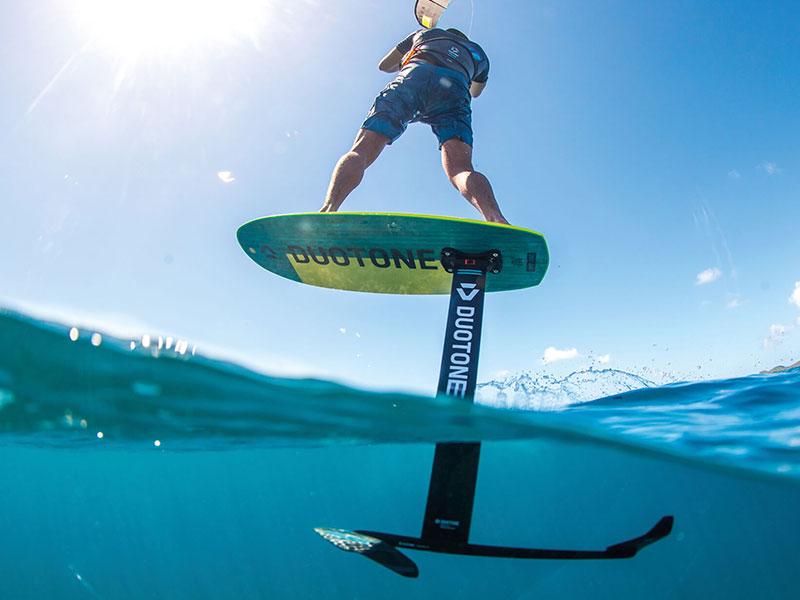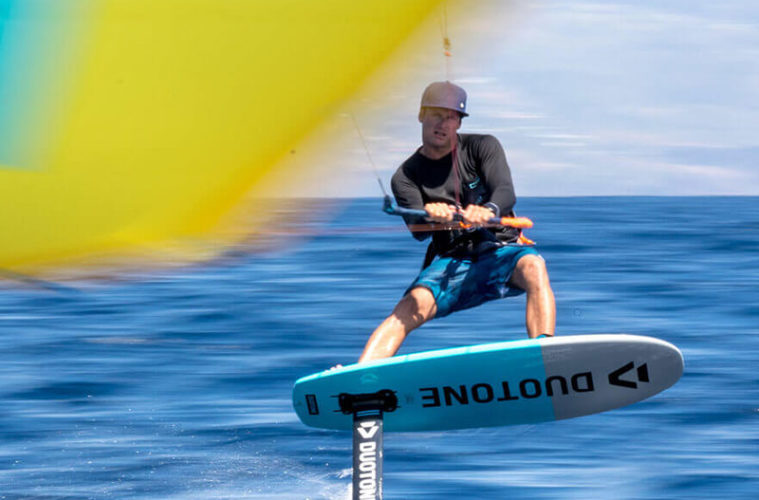Ever wondered how it all works? Ken Winner tells us about aerodynamics and hydrodynamics, and how they’re applied when bringing Duotone’s foil range to life.
Foiling has added another dimension to kiteboarding and there’s nothing better than having more ways to get out on the water for a session. It offers a totally different sensation, effortlessly gliding above the water and unaffected by the state of water. It’s as close as you can get to flying. Who wouldn’t want to experience that?
At Duotone, the development and advancement of the wings has come on leaps and bounds over the past few years and today, foiling has never been easier, more accessible, safer, faster and more fun, but it’s not every day we get to understand how and why it all works. The guys at Duotone had a chat with foil designer Ken Winner about aerodynamics and hydrodynamics, and how they play a part in bringing concepts to life. Here’s what he had to say”¦
Is the field of aerodynamics different from the field of hydrodynamics?
For our relatively slow-moving wings, they are in many ways the same. Engineers can use the same software to do computer performance simulations and analysis, whether designing a slow-moving wing in the air or a slow-moving wing in the water. On the other hand, fast moving wings, like super sonic jet wings or supercavitating water wings are very different.
 If aerodynamics deals with the motion of air and hydrodynamics with the motion of water, how can one be applied to another? For example, water is much more dense than air.
If aerodynamics deals with the motion of air and hydrodynamics with the motion of water, how can one be applied to another? For example, water is much more dense than air.
Both fall under the field of fluid dynamics, because air and water are both fluids. They are similar in important ways and behave similarly in important ways. The difference in density is important and designers have to allow for it, but air and water are both fluids, so they share similarities in the way they behave.
You mention that there is a point where aerodynamics and hydrodynamics are quite different. What is that point and why?
Wings in the air behave one way at sub-sonic speeds, differently at near-sonic speeds and differently again at super-sonic speeds. Wings in the water operating at low speeds behave in many ways like slow-moving wings in the air. However, as speed increases wings in the water start to have problems like ”˜cavitation.’ Cavitation occurs when water encounters an area of low pressure – generated by a wing, for example ”” and vaporises, thus affecting the lift generated by the wing.
There is the additional issue with hydrofoils that they have a strut (or ”˜mast,’ as we incorrectly say) that connects the wings to the board. This strut passes through the surface of the water, which means we need an entirely different approach to evaluating its lift and drag. Froude number, ship hydrodynamics and ventilation can come into play here, none of which apply to wings in the air.
 How do you test foil wing designs?
How do you test foil wing designs?
We test hydrofoil wing designs with CFD (computational fluid dynamics) software on the computer. When we have a design that looks good on the computer, we build it and test it on the water. We don’t test off the water as we don’t have the facility for that.
 How has fluid dynamics been applied when designing and testing our foil range?
How has fluid dynamics been applied when designing and testing our foil range?
As mentioned above, we look at hydrofoil designs on the computer using CFD software. When we have a design that we think may be an improvement, we build and test it. For example, we looked at the pitch stability of wings on the computer, built the prototypes and evaluated them for pitch stability. This has led to some quite stable designs which can now be seen in the Duotone foil range.
This article first appeared on the Duotone website here.


